Concord, CA Pollen and Allergy Report for Summer 2023
Pollen Allergy Trends in Concord, CA
When is pollen lowest in Concord, CA?

February
Lowest month total PPM
Avg. PPM
When is pollen highest in Concord, CA?

April
Highest month total PPM
Avg. PPM
How does pollen in Concord, CA compare to California?
Concord has a lower average PPM than the state of California.
Concord yearly avg PPM:
California yearly avg PPM:
How does pollen in Concord, CA compare to the USA?
Concord has a lower average PPM than the USA.
Concord yearly avg PPM:
USA yearly avg PPM:
Is pollen worse this year in Concord, CA?
Spring 2023 was worse than spring 2022.
Spring 2023 PPM:
Spring 2022 PPM:
Average PPM in Concord, CA
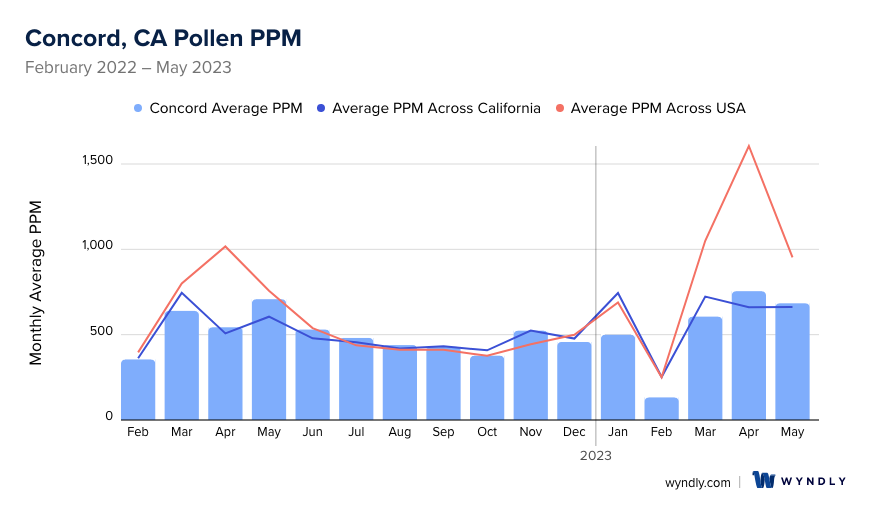
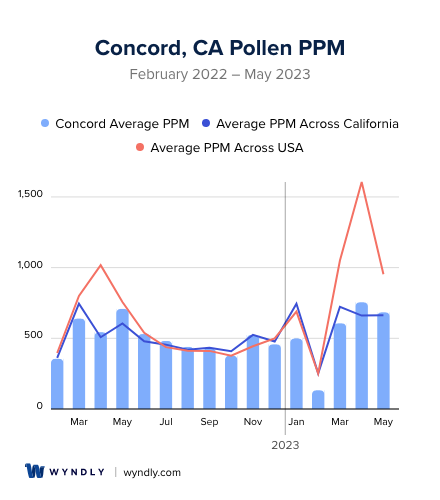
Concord, CA Pollen and Allergy Breakdown by Month
Grass
When is grass pollen highest in Concord, CA?
May has the highest grass pollen in Concord, CA with an average PPM of
When is grass pollen lowest in Concord, CA?
December has the lowest grass pollen in Concord, CA with an average PPM of
Tree
When is tree pollen highest in Concord, CA?
April has the highest tree pollen in Concord, CA with an average PPM of
When is tree pollen lowest in Concord, CA?
August has the lowest tree pollen in Concord, CA with an average PPM of
Weed
When is weed pollen highest in Concord, CA?
November has the highest weed pollen in Concord, CA with an average PPM of
When is weed pollen lowest in Concord, CA?
February has the lowest weed pollen in Concord, CA with an average PPM of
Concord, CA Pollen Monthly Breakdown by Pollen Type
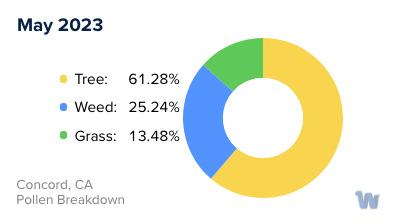
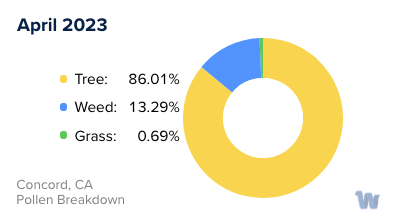
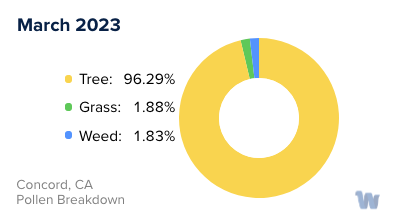
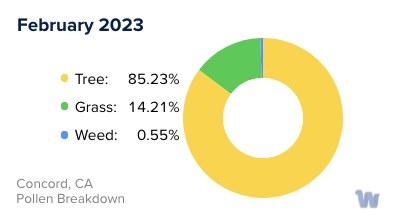
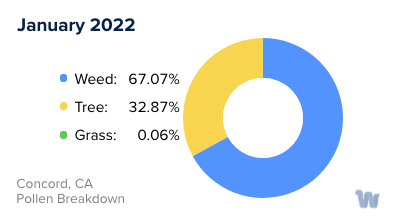
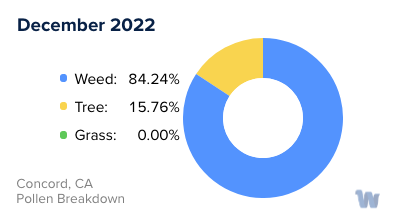
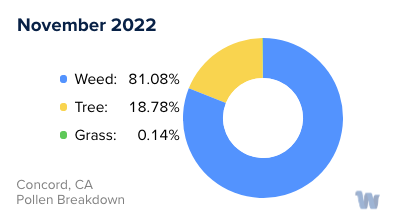
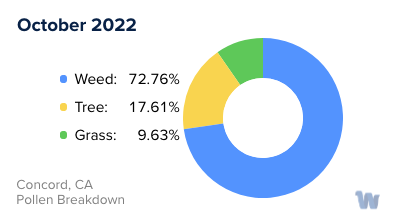
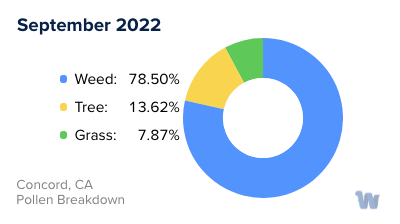
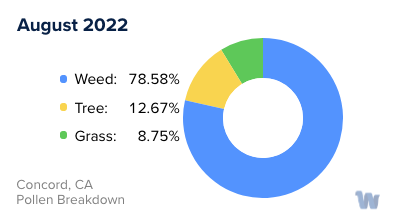
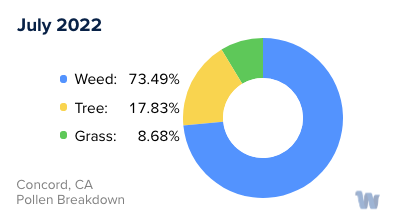
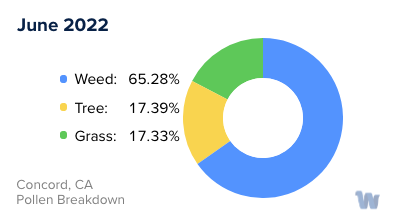
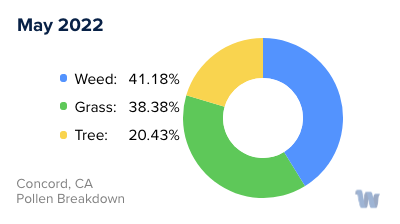
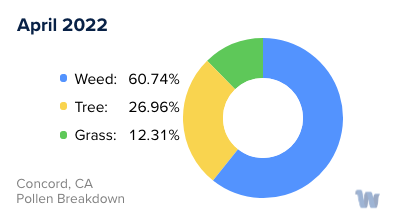
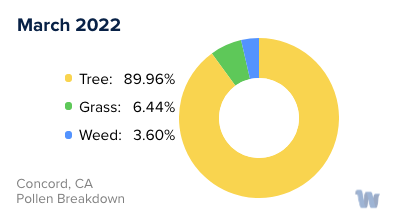
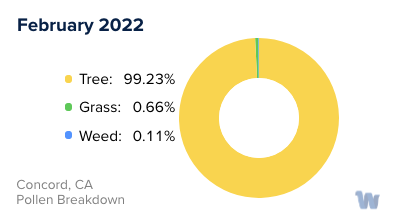
Pollen and Hay Fever in Concord, CA
Concord, California, is known for its warm summers and mild winters, attracting locals and tourists alike. However, the changing seasons also bring about an invisible challenge – pollen allergies, often referred to as hay fever.
Pollen allergies, or hay fever, are caused when our immune system overreacts to pollen grains in the air. Pollen, a powdery substance released by plants for reproduction, is carried around by wind, insects, and birds. It's an essential part of nature's cycle, but for some of us, it's also a source of discomfort.
In Concord, pollen is primarily released by three types of plants: trees, grasses, and weeds. Each of these has a specific blooming season, leading to varying levels of pollen in the air throughout the year.
Trees such as oaks, cedars, and pines, bloom in the spring, releasing copious amounts of pollen. This period is often the most challenging for people with pollen allergies, as tree pollen is abundant and easily carried by the spring breeze.
Grasses, including ryegrass and Bermuda grass, typically bloom in late spring and early summer. They fill the air with lightweight pollen grains that can travel great distances. The beginning of summer in Concord can thus be a challenging time for those sensitive to grass pollen.
Finally, weeds like ragweed and sagebrush release their pollen in late summer and fall. For individuals who are particularly sensitive to weed pollen, the end of summer and the onset of autumn can bring about an increase in allergy symptoms.
Understanding the types of pollen and their seasons in Concord can help residents and visitors anticipate and prepare for potential pollen allergies. Awareness is the first step towards managing the challenging symptoms of hay fever without letting it cloud the charm of Concord's changing seasons.

